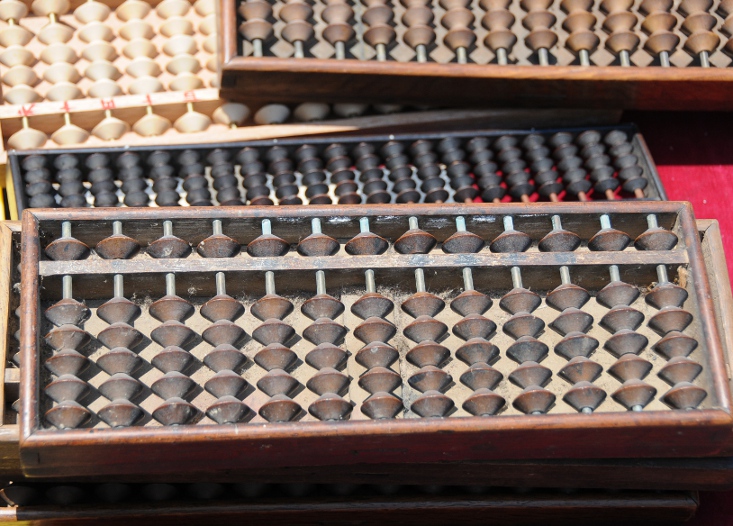Today was my fourth soroban class. “What ” I hear you ask, “shouldn’t you study Japanese instead of something random?” Well soroban is indeed Japanese, it is the Japanese type of abacus.  The history of the soroban (lit. counting tray) goes back around 400 years, when the Chinese version of it, the suanpan (which itself is about 1800 years old) was introduced to Japan. Japanese merchants were the early adopters and had been using it since then, but it took until the 17th century for it to become popularly known, and Japanese mathematicians started to study it in depth and improve its workings. Only in the early Meiji period, i.e., at the end of the 19th century, did the soroban take its modern shape and has been unchanged ever since. Even today how to use the soroban is taught in primary schools, and you even need to pass a soroban exam to qualify for work in public corporations.
The history of the soroban (lit. counting tray) goes back around 400 years, when the Chinese version of it, the suanpan (which itself is about 1800 years old) was introduced to Japan. Japanese merchants were the early adopters and had been using it since then, but it took until the 17th century for it to become popularly known, and Japanese mathematicians started to study it in depth and improve its workings. Only in the early Meiji period, i.e., at the end of the 19th century, did the soroban take its modern shape and has been unchanged ever since. Even today how to use the soroban is taught in primary schools, and you even need to pass a soroban exam to qualify for work in public corporations.
Each soroban has a number of vertical rods or columns, each representing one digit, with five beads each. The beads are separated by a single horizontal reckoning bar into one go-dama (5-bead) on top and four ichi-dama (1-beads) at the bottom. Clearly, the more rods, the more powerful the computations that can be performed. Soroban always have an odd number of rods, the standard size has 13, in class we use soroban with 21, and my teacher gave me a small one with 11 rods to practice at home.
The basic operations of course are the same, regardless of size. The centre rod represents the one digit, the first rod to the left the 10 digit, the rod yet one further to the left the 100 digit, and so forth. To the right of the centre are the 1/10th, 1/100th, 1/1000th… rods. The four ichi-dama beads at the bottom each count as one, the go-dama bead on top counts as five, but only when they touch the reckoning bar. So, to practice a little, can you read the number below?
The beads are operated, i.e., flipped up and down, with the thumb and forefinger of the right hand. The go-dama on top is both added (moved downwards) and subtracted (moved upwards) with the forefinger, whereas the ichi-dama at the bottom are added (moved upwards) with the thumb and subtracted (moved downwards) with the forefinger. Not only this, but also the order of the movements is strictly prescribed, the reason for this is simply to increase the speed of the calculation.
There are several ways of adding and subtracting numbers, depending on how many beads are used already on the rod. Here, the concept of complements plays a very important role for computations on a soroban. For example, adding 7 can be done by
- adding 7 to a single rod (by pinching the go-dama and two ichi-dama together simultaneously), or
- adding 2, subtracting 5, and adding 10, or
- subtracting 3 and adding 10.
So far, addition and subtraction are all I can do. The concepts are easy, but it takes a while to do the finger work correctly (and fast), and sometimes, when I am all stuck in thinking about complements, I completely forget about the easy way of addition or subtraction – by simply sliding the right number of beads up or down…
